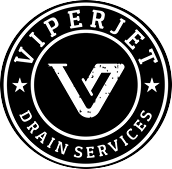Storm drains play a crucial role in managing rainwater runoff and preventing flooding in urban areas. However, when these drains become clogged with debris, sediment, and pollutants, they can no longer effectively channel water away, leading to potential flooding and environmental contamination. In this article, we will explore how storm drains get clogged and discuss various methods for cleaning them to maintain proper function.
Causes of Storm Drain Clogs:
1. Natural Debris: Leaves, twigs, branches, and other natural debris can accumulate in storm drains, especially during heavy rainfall or windy conditions.
2. Trash and Litter: Discarded items such as plastic bags, bottles, cans, and wrappers can find their way into storm drains, causing blockages.
3. Sediment and Soil: Erosion and sediment runoff from construction sites, roads, and parking lots can deposit sediment and soil into storm drains, leading to clogs.
4. Grease and Oil: From roadways and parking lots, grease, oil, and other pollutants can wash into storm drains, forming sticky residues that trap debris and impede water flow.
5. Tree Roots: Over time, tree roots can penetrate storm drain pipes, causing cracks and blockages as they grow and expand.
Methods for Cleaning Clogged Storm Drains:
1. Manual Removal: In cases where debris is visible near the surface of the storm drain, manual removal using rakes, shovels, or grabbers may be effective. However, this method is labor-intensive and may not address deeper clogs.
2. High-Pressure Water Jetting: High-pressure water jetting involves using specialized equipment to blast water into storm drains at high velocities, dislodging and flushing away debris, sediment, and pollutants. This method is highly effective at clearing clogs and restoring proper drainage.
3. Vacuum Truck Services: Vacuum trucks equipped with powerful suction devices can remove debris and sediment from storm drains and catch basins. The collected material is then transported to a designated disposal site.
4. Root Cutting: For clogs caused by tree roots infiltrating storm drain pipes, root cutting equipment can be used to sever and remove the roots. This helps restore proper water flow and prevents further damage to the drainage system.
5. Chemical Treatments: In some cases, chemical treatments may be used to dissolve organic matter and grease buildup in storm drains. However, caution must be exercised to prevent harm to the environment and wildlife.
6. Regular Maintenance: Implementing a regular maintenance schedule for storm drains, including inspections, cleaning, and repairs as needed, can help prevent clogs and ensure proper functioning of the drainage system.
Maintaining clean and clear storm drains is essential for preventing flooding, protecting the environment, and preserving public safety. By understanding the causes of storm drain clogs and implementing appropriate cleaning methods, municipalities, property owners, and environmental agencies can effectively manage storm water runoff and mitigate the risk of drainage-related issues. Whether through manual removal, high-pressure water jetting, vacuum truck services, or other techniques, regular maintenance and proactive measures are key to keeping storm drains clean and functioning optimally.

